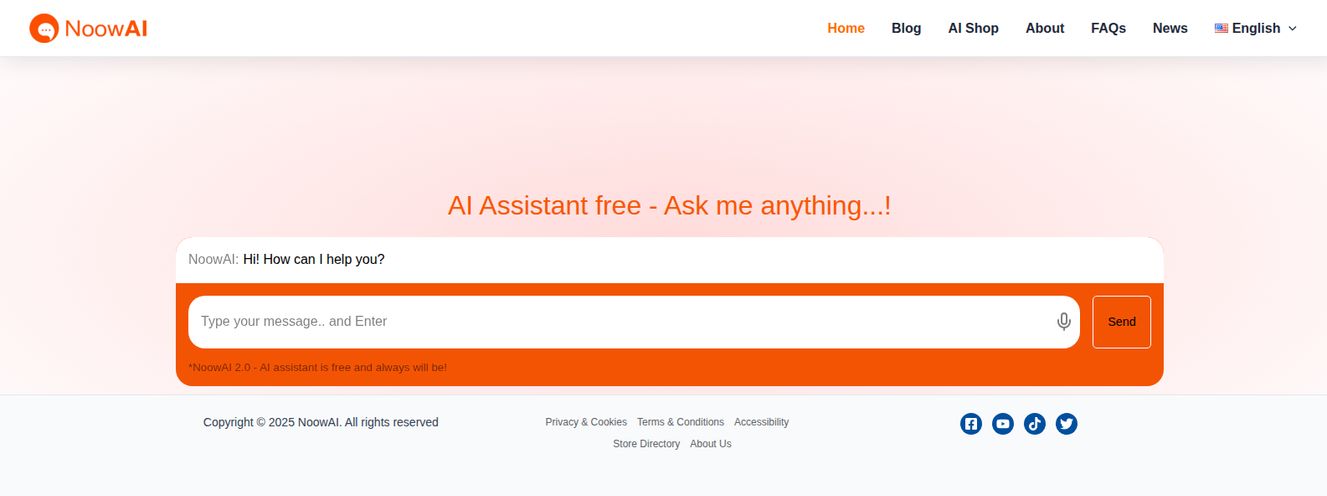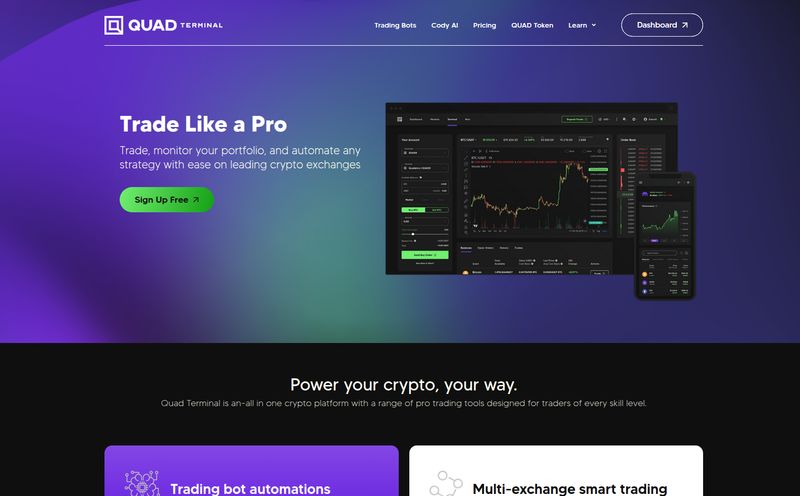I’ve been in this game for a while now. SEO, traffic, team management… you name it. And if there's one thing that’s been a constant, nagging headache, it's the weekly sales team meeting. You know the one. It’s a mix of self-reported numbers, vague feelings about who’s “pulling their weight,” and a manager trying to steer the ship with a compass that seems to spin randomly. We’ve all been there, relying on our “gut feeling” to gauge who the top performers are.
But gut feelings are messy. They're biased. They can’t be quantified when it's time for a performance review or, worse, a tough conversation about someone's output. For years, we've cobbled together spreadsheets and manually updated reports, trying to paint a clear picture. It’s a chore. It's often inaccurate. And honestly, it’s a massive time sink.
So when a new tool called Drogo landed on my radar, promising to bring data-backed clarity to sales team performance, I was skeptical but intrigued. Another dashboard? Another platform promising to revolutionize everything? Yeah, I've heard that before. But Drogo felt a little different. It talks less about just tracking numbers and more about creating a transparent culture of accountability. And that got my attention.
So, What is Drogo, Anyway?
Think of Drogo as a truth serum for your team's workflow. At its core, it's a sales team performance tracking platform. But that's a bit of a dry description. What it really does is connect to the project management tools you're probably already using and starts keeping score. Automatically. It watches who’s doing what, how it lines up with the goals you've set, and creates a real-time, unbiased record of performance.
The whole idea is to take that 'gut feeling' and either back it up with hard data or prove it wrong. It makes those difficult conversations about performance less about personal opinion and more about shared facts. It’s designed to show, in black and white, who is reliable, who is hitting their targets, and where the bottlenecks are. No more hiding behind vague updates or getting lost in a sea of competing priorities. The data is just… there.
The Features That Actually Matter
A feature list can be boring, so let's talk about what this stuff actually does for you as a manager or team lead.

Visit Drogo
Getting a Real-Time Pulse on Your Team
The real-time performance tracking and customizable dashboards are the heart of Drogo. Imagine being able to see, at a glance, exactly where every project stands and how every team member is progressing towards their goals. It’s like having an EKG for your sales floor. You can spot a problem—a dip in activity, a stalled deal—almost as it happens, not a week later when you're reading a stale report. This means you can intervene and help, rather than question and blame after the fact.
Let the Robots Do the Math
This is where I breathe a sigh of relief. The automated performance calculations. No more fiddling with Excel formulas at 10 PM. Drogo handles it. It calculates performance scores based on the rules and goals you set. This removes so much of the manual work and, more importantly, the potential for human error or bias. When bonus time or promotion season rolls around, you have a clean, objective history of contributions. This is fair for you, and its fair for your team.
AI-Powered Hindsight is 20/20
Here's a cool one: AI-powered retrospectives. Instead of just showing you what happened, the AI helps analyze why. It can spot patterns in team performance, identify areas for improvement, and even offer insights for your next sprint or sales cycle. It's less about being a Big Brother watching over everyone's shoulder and more about being an intelligent coach that helps the whole team get better. This shifts the focus from simple monitoring to genuine improvement.
The Good, The Bad, and The Data-Driven
No tool is perfect. Let's be real. After kicking the tires on Drogo, here’s my honest breakdown of where it shines and where you should be cautious.
The Good Stuff I Found with Drogo
The transparency is, without a doubt, a huge win. When everyone can see the same data, it fosters a sense of shared responsibility. I've seen teams where the high-performers feel resentful of those who coast. Drogo puts an end to that by making contributions visible. It also makes rewarding people so much easier. You can literally automate reward systems based on the data, so top performers get recognized consistently, not just when you remember to give them a shout-out.
And those tough performance talks? They become 10x easier. Instead of, “I feel like you’re not focused,” it becomes, “Let’s look at the data together. It shows your activity on key accounts has dropped 30% in the last two weeks. What’s going on? How can I help?” See the difference? It’s collaborative, not confrontational.
A Few Things to Keep in Mind
Now, for the reality check. The platform’s documentation suggests it might require a scrum master for the best setup. I'd rephrase that: you need someone who will own the process. If you just throw this tool at your team without setting clear expectations and a framework for how the data will be used, it won't magically fix your problems. It’s a tool, not a new manager.
There's also the Micromanagement Trap. With this much data, it's tempting for a manager to zoom in on every tiny detail and question every move. That's a fast track to destroying team morale. This tool is best used for a 30,000-foot view and for identifying trends, not for tracking bathroom breaks. You have to trust your team and use the data to support them, not to control them.
Finally, dont forget the human element. Data is powerful, but it doesn't tell the whole story. It won't tell you that your top salesperson is having a tough time at home, or that a junior member came up with a brilliant new pitch idea in an informal chat. The numbers are a huge part of the picture, but they're not the entire picture.
How Much Does Drogo Cost?
Pricing is always the million-dollar question, isn't it? Well, in this case, it’s a lot less. Drogo's pricing seems pretty straightforward and, frankly, very reasonable for what it's offering. It's a per-user model, which is standard for SaaS platforms.
| Plan | Price | Key Features |
|---|---|---|
| Basic Plan | $5 /user/month | All PM tool integrations, automated performance calculations, AI daily reports. |
| Standard Plan | $10 /user/month | Everything in Basic, plus AI support for team members and basic AI management oversight. |
The best part? Both plans come with a two-week free trial, and you don't even need to put in a credit card. I love that. It shows confidence in the product. They’re basically saying, “Go ahead, try it. We think you'll like it enough to pay for it.” For five or ten bucks a user, to get this level of clarity and save managers hours of administrative work... the math seems to work out.
Who Is Drogo Really For?
So, who should actually sign up for that free trial? In my opinion, Drogo is perfect for sales managers and operations leads of teams from 5 to 50 people. Especially if your team is remote or hybrid. When you can’t just look across the office to see who’s busy, you need a central source of truth like this.
It's for the manager who is tired of the guesswork and wants to be a more effective coach. It's for the company that wants to build a culture of meritocracy and transparency, where performance—not politics—drives rewards.
It’s probably overkill for a tiny 2 or 3-person startup. But for any established team that feels like they’re flying blind, this could be the visibility you've been looking for.
Frequently Asked Questions about Drogo
Does Drogo integrate with tools like Salesforce or HubSpot?
The documentation mentions integrating with "All Project Management Tools." While it doesn't list them all, this typically includes popular platforms like Jira, Asana, Trello, and Monday. For specific CRM integrations like Salesforce, it's best to check with their support, but the goal of a platform like this is to pull data from where your team already works.
Is Drogo difficult to set up?
It seems designed to be user-friendly, but the real work isn't the technical setup—it's defining your goals and metrics clearly. As mentioned, having a dedicated person to manage the process will give you the best results. The technical part should be straightforward, but the strategic part requires some thought.
Can individual team members see their own performance data?
Yes, and this is a key part of its value. When individuals can track their own progress against goals in real-time, it empowers them to take ownership of their performance. It's not just a tool for managers; it's a mirror for the entire team.
How does the AI actually help my team?
On the Basic plan, it automates daily reports, summarizing progress. On the Standard plan, it goes further by providing AI support directly to team members (likely helping them prioritize or identify risks) and giving managers AI-powered oversight, which can spot trends and anomalies you might miss.
Is there a free trial for Drogo?
Absolutely. There's a 14-day free trial for both the Basic and Standard plans, with no credit card required to sign up. This makes it a no-brainer to at least try it out with your team.
My Final Take: Is Drogo Worth It?
After all is said and done, I'm genuinely optimistic about Drogo. It’s not just another analytics tool. It’s a platform built on the principle of transparency. It tackles a very real, very human problem in management—bias and a lack of clear information—with a smart, data-driven solution. It won't solve a bad company culture or make a bad manager a good one. No tool can do that.
But for a good manager who wants to be great? For a team that wants to be fair and focused? Drogo provides the framework to make that happen. If you're tired of running your team on gut feelings, you should definitely give it a look. The free trial is waiting.
Reference and Sources
- Drogo Official Website & Pricing
- Gartner Insights on Sales Operations - For further reading on the importance of data in modern sales teams.



